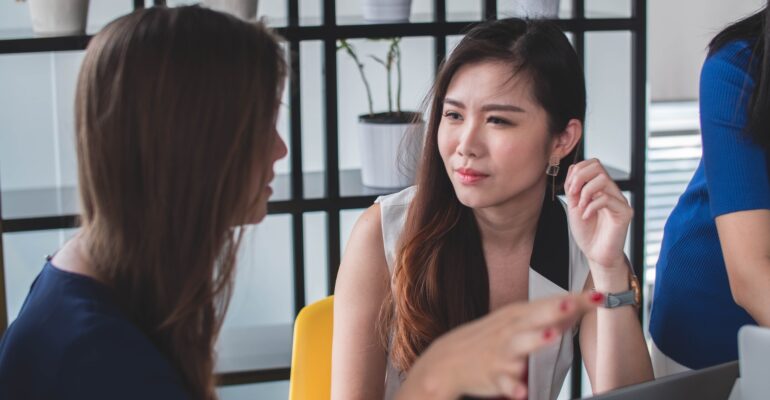A stirring talk against regulatory capture
Welcome to the thirty-third edition of ‘3-2-1 by Story Rules‘.
A newsletter recommending good examples of storytelling across:
- 3 tweets
- 2 articles, and
- 1 long-form content piece
Let’s dive in.
🐦 3 Tweets of the week

Katalin Kariko is the recent joint Nobel Prize (Medicine) winner for her pioneering research on mRNA. Respect for her confidence!

“Historic” Building (Est. 1965) 😂😂

The impact of immigration on the US dominance of research is remarkable.
📄 2 Articles of the week
This long-form article profiles Michael Lewis – the iconic journalist and superstar chronicler of the world of high finance (and author of bestsellers like ‘Liar’s Poker’, ‘Moneyball’. and ‘The Big Short’).
When a rumour surfaced that Vanity Fair used to pay Lewis $10 a word – while most journalists otherwise languish in the 50-cent range – it almost didn’t matter if it was true. (It was, it turned out.) The rumour merely confirmed what everyone knew: Lewis is the most prestigious narrator of American life.
Lewis’ skill is the ability to find (and narrate) extraordinary stories that most others miss:
Ira Glass, the host of This American Life and a sporadic collaborator with Lewis over the years, offered me another theory. So many of his books, Glass said, are about people who manage to behave rationally in the midst of irrationality, “about people who recognise something important that other people don’t recognise. That’s what he’s attracted to and finds over and over. Because that’s what Lewis does himself. That’s his gig.”
Samanth paints a vivid picture of what makes Michael so unique and successful:
Among journalists, there are many ways of finding things out. “Joan Didion’s technique was to become invisible, so that people forget she’s there,” said Jacob Weisberg, the former editor of Slate and one of Lewis’s closest friends. “With Michael, it’s the opposite. He’s a big presence, but he’s fun, so you want him around.” Weisberg describes Lewis as “radiating total confidence and excitement”, and it’s true – it’s hard to imagine him at a loss for words.
This profile is timed well for Michael’s latest book – ‘Going Infinite: The Rise and Fall of a New Tycoon’ – about Sam Bankman Fried and the FTX saga:
Other journalists may declare that they sat in front-row seats for the FTX meltdown – for what may end up being the greatest crime of the crypto age. But Lewis was backstage before the curtain went up, having heart-to-hearts with the lead actor – and he never left.
Though there is criticism that Lewis has been ‘soft’ on Bankman-Fried, I’m sure the book would be an exciting page-turner.
b. The Written Word by Morgan Housel
Morgan Housel shares some nuggets of wisdom on the art of writing:
Writing is an art, and art is subjective. Novelist William Maughan said there are three rules to good writing. “Unfortunately no one knows what they are.” I actually think there’s one: write the kind of stuff you like to read. Writing for yourself is fun, and it shows. Writing for others is work, and it shows.
This tip is a smart one:
Good writing is a performance. Mark Twain used to read aloud his family and watch their reactions. If he saw them getting bored, he’d cut that part out. If he saw them getting excited, he’d double down on that section. People don’t remember what you wrote as much as they remember how they felt when they read it.
📺 1 long-form watch of the week
a. All-In Summit: Bill Gurley presents 2,851 Miles (36:03) (Hat tip: Sajith Pai)
Bill Gurley is a General Partner at Benckmark, a VC firm based in the Bay Area. In this forum, he has given a talk on the prevalence of regulatory capture in the US by powerful incumbents (in sectors such as telecom) which has resulted in low innovation, high prices, and a poor customer experience.
The talk is an absolute MASTERCLASS on how to craft a compelling visual narrative. For the entire 24-minute duration, Bill has the audience hanging on to his every word.
Apart from a compelling narrative, the talk is sprinkled with humour, surprise, plain-speak, anecdotes, audience engagement (see when he makes the audience repeat something after him) – and a ton of insight.
In the interview later, Bill mentions a staggering fact: this is a presentation that he has been working on a long time – “I have kept notes on it for 15 years… every time I see something I write it down“!!
Fabulous storytelling.
That’s all from this week’s edition.
Photo by Mimi Thian on Unsplash







